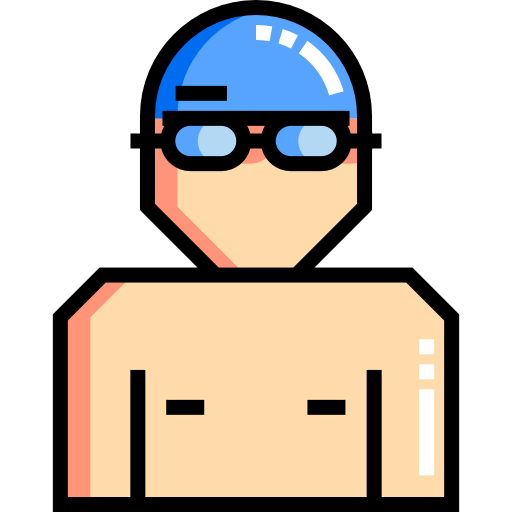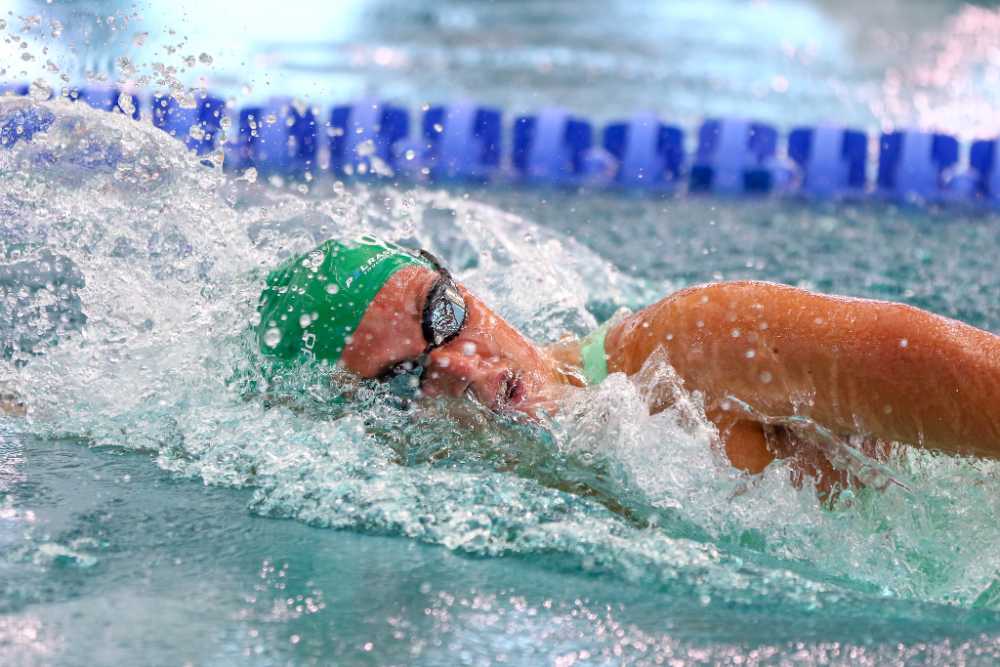Using swim paddles can help you do a ton of different things in the water. Here is a look at the six benefits of hand paddles for swimming.
Hand paddles, also known as swim paddles, are a popular way for swimmers to increase power and upper body endurance in the water.
More importantly, it’s done in a swim-specific way that transfers directly to the pool. Being strong in the water and being strong on land are two different things. I’ve got plenty of friends who can bench press a ton of weight but can only swim a couple of laps of the pool before their shoulders give out.
But swim paddles are more than just power development. (Although that is plenty useful on its own!)
Here are some more benefits of training with hand paddles in the water.
1. Encourages a high elbow catch.
The added surface area of a swim paddle exaggerates the movement of the pull. You can see firsthand how the paddle directs the water down or backward when instigating the pull.
One of the most common mistakes swimmers make when doing freestyle is keeping the arm straight for too long as the pulling motion begins. Paddles reinforce an early vertical forearm.
2. Power development.
Okay, back to the whole power thing. Paddles are actually a super versatile way to increase power in the water.
One of my favorite sets, back in the pre-Covid days when I was swimming lots, was using paddles with a parachute. Or paddles with DragSox.
This is peak power development (provided you are doing it for short durations and allowing plenty of rest for maximal effort and power).
3. Teaches efficiency.
Like training fins, swim paddles increase your overall speed in the water. It’s when we are going faster than what’s typical that we begin to really understand the importance of good body position and an efficient stroke.
Paddles show you how your body needs to be positioned in order to swim at the next level of speed. Plenty of research has shown that swim paddles increase distance per stroke (don’t really need a study to confirm it, but that’s where we are) and speed, making them an excellent tool for unleashing faster swimming.
4. Mixes things up.
Swimming can be boring. I can admit that. Even though going to the pool is usually the best part of my day, there are moments when my stroke feels like hot garbage or I am simply bored with the workout.
Paddles are a new stimulus that you can inject into the session to mix things up and keep you mentally fresh and engaged.
5. Better hand entry.
One of the fun features of swim paddles—the FINIS Agility Paddles immediately come to mind—is that they really reinforce a clean hand entry.
Especially if you use just the middle finger strap and forego the wrist strap.
The immediate feedback of a hand entry that is not clean—the paddle gets torn sideways or even ripped clean off—is a helpful if not humility-inducing note to clean up the hand entry so that it’s smooth.
6. Different paddles for different goals.
Although paddles look simple in function—help me go faster and get stronger!—there are some specialty paddles on the market that can help you address specific goals in the water.
Finger-tip paddles are one example. Designed to really help you work the top of your pull, finger-tip paddles are an excellent tool to sharpen your feel for the water.
Swim paddles – the not-so-benefits
That said, it’s not all chlorinated roses with swim paddles. Like any other training tool or piece of swimming equipment, there can be downsides to hand paddles.
They include:
Excess strain and risk of injury.
At their core, paddles are a strength development tool and need to be viewed as such.
The excitement that comes with using them to gain moderately supersonic speed should also be tempered with the realization that excess use puts a lot of strain on your shoulder, elbow, and wrist.
Swimmer’s shoulder and all of its corresponding misery are familiar to most swimmers, and one of the common ways swimmers land in this heap of inflamed misery is overdoing it with paddles.
Becomes a crutch.
I am fully guilty of falling for the speed that comes with using hand paddles, moving them from training aid to crutch.
Paddles are a tool in your arsenal and shouldn’t be the main feature in your swim practices day after day.
Deploy paddles for specific purposes—increasing power output, super-exaggerating a part of your technique—instead of piling on the paddle-meters simply because you like going fast.
Changes in technique.
While paddles can be used to accentuate an early vertical forearm and a cleaner hand entry, they can also come back to bite us in the butt in the technique department. For starters, don’t forget to pay attention to finger placement.
A common oopsie for swimmers is to spread their fingers when using a paddle to spread out pressure, especially on paddles that are larger than recommended.
Additionally, the large paddle size can slow down the tempo so much that swimming with “regular” tempo can feel harried, which is yet another reason to choose a paddle that is only slightly larger than your hand.
The Bottom Line
Hand paddles are an essential for most swimmers and belong in your mesh bag along with your kickboard, fins, pull buoy, swimmer’s snorkel and swim goggles.
Whether it’s fixing technique errors, getting stronger, or unleashing next-level efficiency in the water, hand paddles can help you to become a better swimmer.

Beau Cormier is a former NCAA I swimmer, US Open National finalist, and swim nerd. When not swimming or working for a data company, you can find him running the trails of the Pacific Northwest with his wife and dogs.


